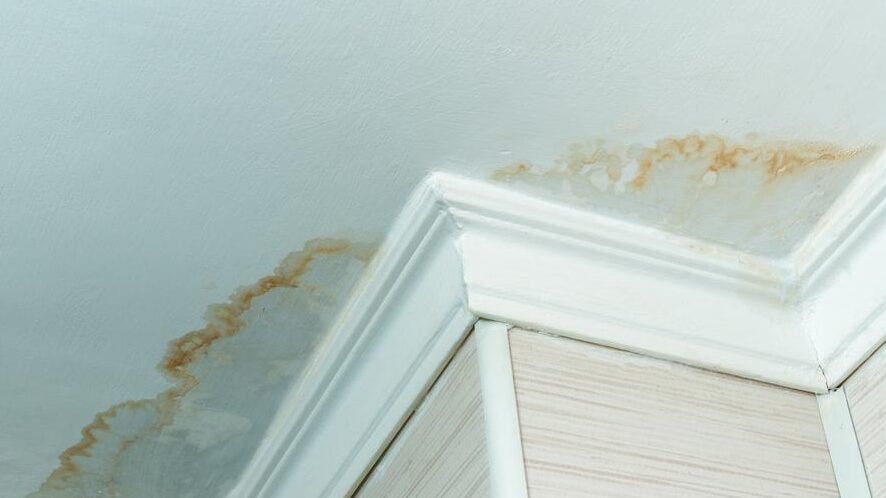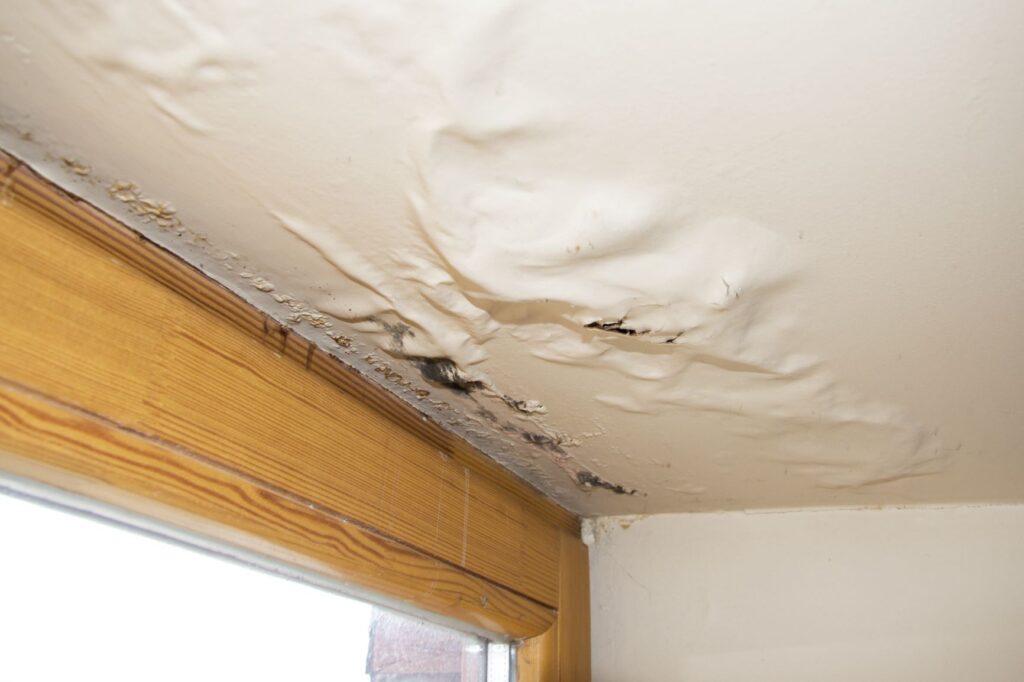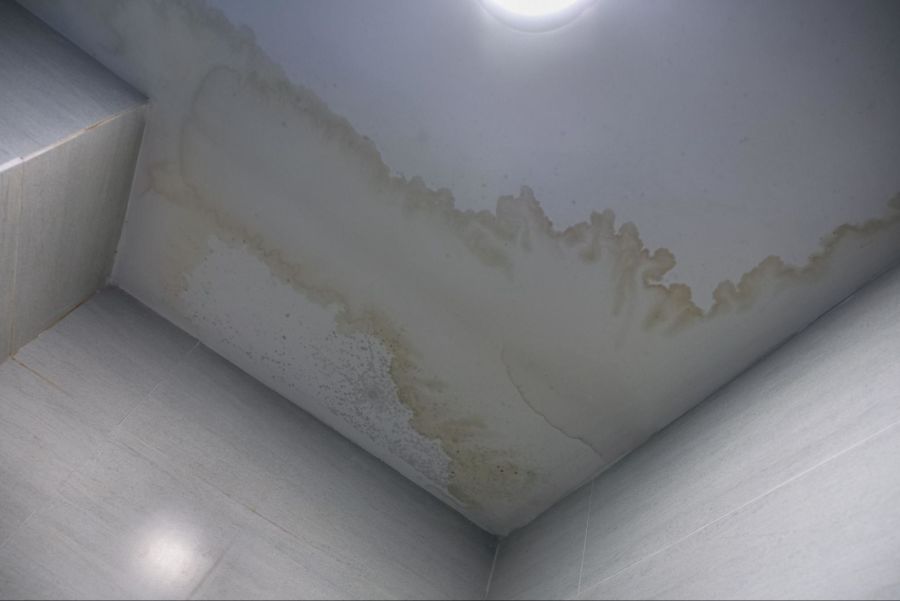If you find yourself facing the stressful situation of a water leak in your ceiling, it can be overwhelming to know where to turn for help. Identifying the right professional to address this issue promptly and efficiently is crucial to mitigate any further damage. This article will guide you through the process of finding the right expert to resolve your ceiling leak, ensuring a seamless and hassle-free experience.
Assessing the Severity of the Water Leak

This image is property of thumbor.forbes.com.
Identifying signs of a water leak in your ceiling
When dealing with a water leak in your ceiling, it is crucial to first identify the signs that indicate a leak. Look out for water stains or discoloration on the ceiling, bulging or sagging areas, and dripping or pooling water. A musty or damp smell in the affected area may also be an indication of a leak. By observing these signs, you can narrow down the location of the leak and assess its severity.
Determining the extent of the water damage
Once you have identified a water leak, it is important to assess the extent of the damage caused by the leak. Check for any structural damage or weakening of the ceiling, as well as any damage to nearby walls, electrical fixtures, or furnishings. The severity of the damage will help you determine the appropriate steps to take for repairs or restoration.
Assessing the urgency of the situation
When dealing with a water leak, it is essential to understand the urgency of the situation. Some leaks may require immediate attention, especially if they are causing significant damage or posing safety risks. Assess factors such as the rate of water flow, the size of the affected area, and whether there is any danger of electrical or structural damage. This assessment will help you prioritize your actions and determine whether temporary measures are needed to minimize further damage.
Locating the Source of the Water Leak
Examining common causes of ceiling water leaks
To effectively locate the source of a water leak, it is important to be familiar with the common causes. Roof leaks, plumbing issues, condensation, and HVAC system problems are among the usual suspects when it comes to ceiling water leaks. By understanding these potential sources, you can narrow down your investigation and increase the chances of finding the precise location of the leak.
Performing a visual inspection of the ceiling
A visual inspection is a crucial step in locating the source of a water leak in your ceiling. Carefully examine the affected area, looking for any signs of water stains, moisture, or discoloration. Trace the water trails or drips to pinpoint where the water is entering the ceiling. It is important to note that the actual source of the leak may not always be directly above the visible damage, as water can travel along beams or pipes before reaching the ceiling.
Using tools to detect hidden water sources
In some cases, the source of a water leak may not be apparent through visual inspection alone. This is where specialized tools can be invaluable. Moisture meters, infrared cameras, and borescopes are examples of tools that can assist in detecting hidden water sources. These tools allow professionals to identify areas of moisture or dampness behind walls, in ceilings, or within the structure itself. Utilizing these tools can help pinpoint the precise location of the leak, preventing unnecessary damage during repair.
Temporary Measures to Minimize Damage

This image is property of ajrestores.com.
Using buckets or containers to catch dripping water
If you have identified a water leak in your ceiling, it is vital to take immediate action to minimize further damage. One temporary solution is to place buckets or containers strategically beneath the leak to catch dripping water. This will prevent the water from damaging the surrounding area, such as furniture or flooring, and reduce the risk of electrical hazards. Remember to empty the containers regularly to avoid overflow.
Placing towels or tarps to protect furnishings
In addition to catching dripping water, it is essential to protect your furnishings and belongings from water damage. Place towels or tarps around the affected area to absorb any moisture and prevent it from seeping into furniture, electronics, or other valuables. This temporary measure will help mitigate potential damage until professional assistance can be obtained.
Shutting off the water supply if necessary
If the source of the water leak is determined to be a plumbing issue, it may be necessary to shut off the water supply to prevent further water damage. Locate the main shut-off valve in your home and turn it off until repairs can be carried out. This step will not only prevent worsening of the water leak but also minimize potential damage to your property.
Seeking Professional Assistance

This image is property of unitedwaterrestoration.com.
Contacting a licensed plumber
When faced with a water leak in your ceiling, one of the first professionals you should consider reaching out to is a licensed plumber. A plumber specializing in leaks will have the expertise and tools necessary to accurately diagnose the source of the leak and provide appropriate repairs. Contacting a licensed plumber ensures that the issue will be addressed by a qualified professional.
Consulting with a water damage restoration company
In situations where the water leak has resulted in significant damage or poses health risks, it is advisable to consult with a water damage restoration company. These professionals specialize in assessing, mitigating, and restoring properties affected by water damage. They have the expertise, equipment, and resources to handle the complex process of water damage restoration, ensuring a thorough and efficient resolution to the issue.
Getting recommendations from friends or neighbors
When seeking professional assistance for a water leak in your ceiling, it can be helpful to ask for recommendations from friends, neighbors, or acquaintances who have previously dealt with similar issues. Personal recommendations can provide valuable insights into the quality of service provided by various professionals. Additionally, you can research online reviews and ratings to further evaluate the reputation and reliability of the professionals you are considering.
Hiring a Certified Water Damage Restoration Expert

This image is property of rockemergency.com.
Checking for proper certifications and licenses
When hiring a water damage restoration expert, it is crucial to ensure that they possess the necessary certifications and licenses. These certifications indicate that the professional has undergone appropriate training and adheres to industry standards. Look for certifications such as the Institute of Inspection, Cleaning and Restoration Certification (IICRC) or the Restoration Industry Association (RIA). Confirming their licensing and certifications will give you confidence in their expertise and ability to handle your water damage restoration needs.
Requesting free assessments and quotes
Before making a decision, consider requesting free assessments and quotes from multiple water damage restoration experts. These consultations provide an opportunity to discuss the extent of the damage, required repairs, and estimated costs. By comparing the assessments and quotes from different professionals, you can make an informed decision based on the services offered, pricing, and your specific requirements.
Verifying insurance coverage
Insurance coverage is an important consideration when hiring a water damage restoration expert. Ensure that the professional you choose is experienced in working with insurance companies and can help facilitate the claims process. Verify that they carry liability insurance to protect you from any potential damages or accidents that may occur during the restoration process. Understanding the extent of insurance coverage will provide peace of mind and protect you from potential financial burdens.
Selecting a Reliable Roofing Contractor

This image is property of ranshaw.com.
Understanding the role of the roof in ceiling leaks
When dealing with a ceiling water leak, it is essential to understand the role of the roof in the overall issue. The roof is the primary barrier between your home and the elements, and any damage, deterioration, or poor installation can lead to water leaks. A reliable roofing contractor will not only address the visible leak but also inspect and identify any underlying issues with the roof that may have contributed to the problem.
Researching reputable roofing companies
To select a reliable roofing contractor, thorough research is essential. Look for roofing companies with established reputations in your area. Check their credentials, years of experience, and customer reviews. Verify if they specialize in roof repairs and have experience dealing with ceiling water leaks. A reputable roofing contractor will possess the expertise and knowledge to effectively diagnose and repair roof-related issues.
Checking customer reviews and ratings
Customer reviews and ratings can provide valuable insights when selecting a reliable roofing contractor. Look for reputable review websites or platforms where customers share their experiences. Pay attention to feedback regarding the contractor’s professionalism, responsiveness, quality of workmanship, and adherence to deadlines. Positive reviews and high ratings are indicative of a reliable contractor that can address your ceiling water leak effectively.
Working with an Experienced Plumber
Finding a professional plumber specializing in leaks
To address a water leak in your ceiling stemming from plumbing issues, it is crucial to work with an experienced plumber who specializes in leak detection and repairs. Seek out plumbers with a proven track record in handling similar issues. Look for certifications, licenses, and experience specifically related to leak detection and repairs. By working with a specialized plumber, you can have confidence in their ability to accurately diagnose and resolve the problem.
Providing detailed information about the issue
When discussing the water leak issue with a plumber, it is essential to provide them with detailed information about the problem. Explain the signs you have observed, the duration of the issue, and any previous attempts you may have made to address it. This information will assist the plumber in formulating an accurate diagnosis and devising an appropriate solution. The more detailed and specific you can be, the better equipped the plumber will be to efficiently address the issue.
Discussing repair options and costs
Once the plumber has diagnosed the source of the water leak, it is important to have a detailed discussion about the available repair options and associated costs. Ask the plumber to explain the recommended repairs and any alternatives that may be available. Discuss the pros and cons of each option, along with the timeframe required for the repairs and the estimated costs involved. This discussion will help you make an informed decision and budget accordingly.
DIY Steps to Temporarily Stop the Leak
Using sealants or waterproof tape
If you are comfortable taking on DIY projects, there are a few steps you can take to temporarily stop a water leak in your ceiling. One option is to use sealants or waterproof tape to seal the area around the leak. Ensure that the area is clean and dry before applying the sealant or tape. This temporary measure can provide a temporary barrier against water intrusion until professional repairs can be made.
Replacing damaged or missing roof tiles
In the case of a roof-related leak, inspect the roof for any damaged or missing tiles that may be contributing to the water leak. If you feel comfortable working at heights and have the necessary materials, you can attempt to replace the damaged or missing tiles. However, exercise caution and ensure proper safety measures are followed. Keep in mind that this is a temporary solution and it is advisable to seek professional assistance for a lasting repair.
Applying a roof patch or sealant
In some cases, you may be able to temporarily stop a roof leak by applying a roof patch or sealant. Roof patches and sealants can be applied to small cracks or gaps in the roof surface, providing a temporary barrier against water intrusion. Follow the manufacturer’s instructions and apply the patch or sealant to the affected areas. Again, remember that these are temporary measures, and it is crucial to seek professional assistance for a permanent repair.
Preparing for the Professional’s Arrival
Clearing the affected area of furniture and valuables
Before the professionals arrive to address the water leak in your ceiling, it is important to clear the affected area of any furniture, valuable items, or belongings that may be at risk of further damage. This precautionary step will allow the professionals to work efficiently and minimize the potential for accidental damage to your possessions. Move furniture and items to a safe location until the repair or restoration process is complete.
Taking photographs of the water damage
To ensure you have proper documentation of the water damage for insurance purposes, it is advisable to take photographs of the affected areas. Capture clear and comprehensive images that clearly show the extent of the damage, including any visible signs of water intrusion, structural damage, or other related issues. These photographs will serve as evidence and may be required for the insurance claims process.
Gathering necessary documents for insurance claims
If you plan to file an insurance claim for the water damage, gather any necessary documents that may be required by your insurance provider. This may include photographs of the damage, receipts or invoices from the professionals hired for repairs, and any other relevant paperwork. Familiarize yourself with your insurance policy and understand the process for filing a claim. Having the necessary documents prepared in advance will streamline the claims process and expedite a resolution.
Preventing Future Water Leaks
Regularly inspecting the roof and ceiling
To prevent future water leaks in your ceiling, it is important to conduct regular inspections of both the roof and ceiling. Check the roof for any signs of damage, such as loose or missing tiles, deteriorating sealant, or damaged flashing. Additionally, inspect the ceiling periodically for water stains, discoloration, or signs of moisture. By identifying and addressing issues promptly, you can prevent minor problems from escalating into major water leaks.
Addressing minor issues promptly
Minor issues, such as a small crack or a loose tile, should be addressed promptly to prevent potential water leaks and extensive damage. Do not neglect seemingly insignificant problems, as they can worsen over time and lead to more significant issues. If you notice any signs of damage or deterioration, take proactive measures to address them promptly. This may involve DIY repairs or seeking professional assistance, depending on the complexity of the issue.
Maintaining proper drainage and gutters
Proper drainage and functional gutters play a crucial role in preventing water leaks in your ceiling. Ensure that your gutters are clear of debris and functioning effectively, allowing water to flow away from the roof and walls. Regularly clean and inspect gutters to prevent clogs and ensure proper water flow. Additionally, ensure that downspouts extend away from the foundation of your home to prevent water from pooling near the structure. Proper maintenance of drainage systems will minimize the risk of water leaks and associated damage.
In conclusion, dealing with a water leak in your ceiling requires a systematic approach to assess the severity, locate the source, minimize damage, and seek professional assistance. By following the outlined steps and taking proactive measures, you can effectively address the issue and prevent future water leaks. Remember to prioritize safety, consult professionals when necessary, and maintain regular inspections and maintenance to safeguard your home from ceiling water leaks.
